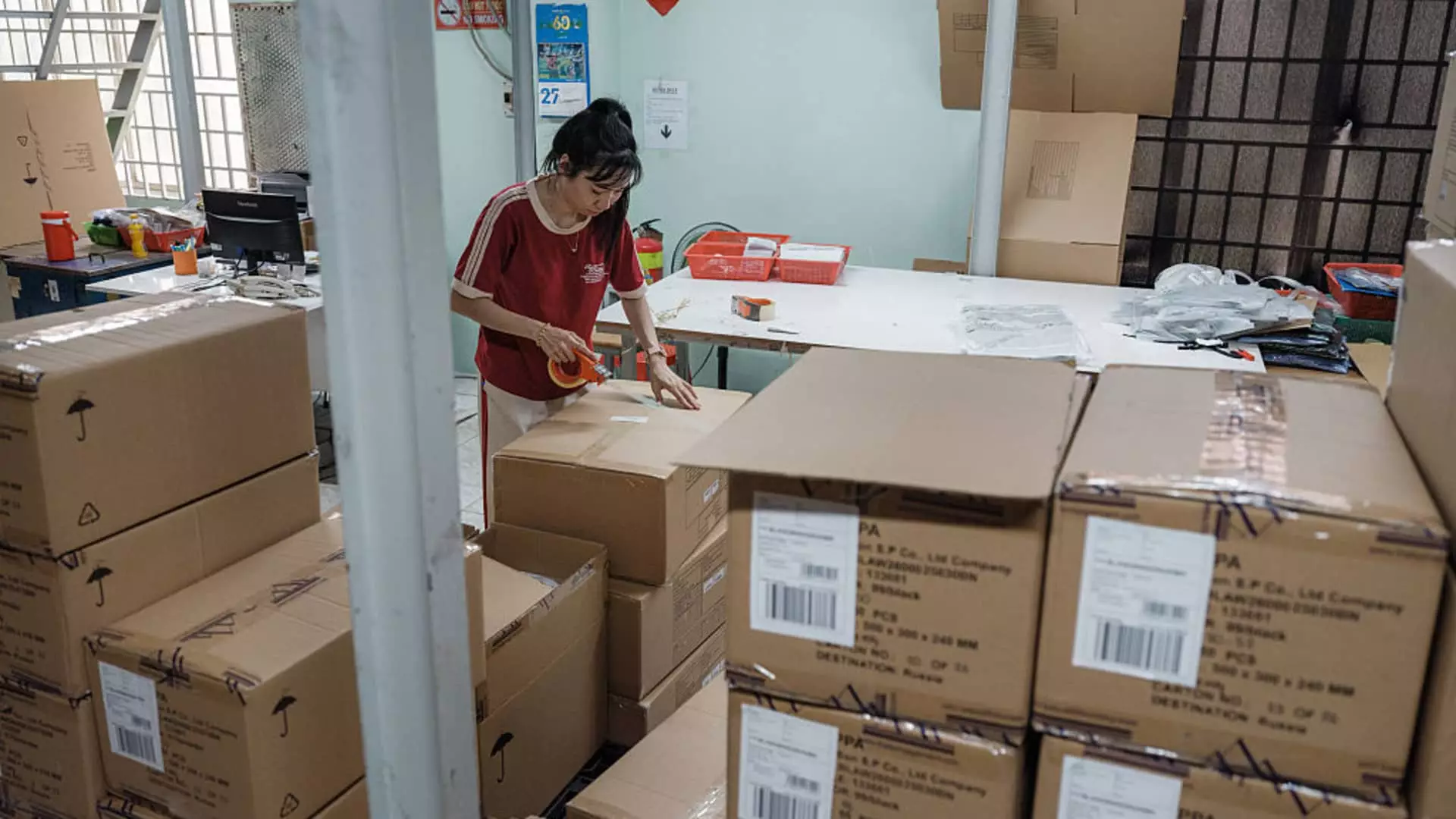In an era rife with unpredictable trade policies, the retail industry finds itself caught in a complex web of economic geopolitical tensions. The recent tentative agreement regarding Vietnam tariffs has ignited a flicker of relief among industry insiders, but beneath this glimmer lies a troubling reality: the perpetual uncertainty surrounding international trade threatens the very fabric of consumer trust and economic stability. While many hail the reduction from a proposed 46% to 20%, this compromise masks deeper systemic issues that could have enduring negative repercussions.
Trade policies oscillate with political winds, and manufacturers are tasked with navigating a landscape that shifts almost daily. Such volatility hampers long-term strategic planning, forcing companies to adopt reactive rather than proactive business models. This uncertainty doesn’t just complicate supply chain logistics; it erodes consumer confidence. When shoppers see unpredictable prices on goods they buy regularly, doubts about the stability of the economy creep in, leaving many hesitant to make significant purchases. The ripple effects of this hesitation extend beyond mere consumer sentiment—they threaten the foundational trust in a fair and predictable marketplace.
Moreover, the industry’s reliance on Vietnam and other Southeast Asian countries underscores an uncomfortable truth: globalization’s delicate balance is at risk. These countries have become crucial hubs for affordable manufacturing, where quality rarely suffers despite lower costs. However, the prospect of punitive tariffs destabilizes these economic partnerships, forcing companies to reconsider their sourcing strategies. The beauty of this supply chain—its resilience amidst geopolitical unrest—is now under threat, which may lead to a retrenchment into more fragmented, less efficient models that could stifle innovation and extend delivery times.
Economic Sacrifices and Consumer Impact: The Hidden Toll
The decision to mitigate tariff hikes by settling on a 20% levy, while better than 46%, still imposes significant burdens on both businesses and consumers. Industry analysts warn that these incremental increases are not merely pennies added to a price tag—they are catalysts for a broader erosion of disposable income. The direct inflation of retail prices, especially in sectors like footwear and apparel, translates to tangible financial stress for everyday Americans. For example, a modest increase of a few dollars on a $100 product may seem trivial, but when scaled across millions of transactions, it becomes a systemic burden that limits spending and savings.
Retail giants such as Nike and American Eagle have already begun internal cost adjustments, planning to pass these expenses onto consumers. While raising prices might shield profit margins temporarily, it doesn’t compensate for the potential decline in sales volume. Consumers are increasingly discerning; they are more willing to forego purchases or shift to alternative shopping modalities if they perceive the value proposition has diminished. The risk here is a downward spiral where higher prices lead to lower demand, prompting companies to further increase costs and perpetuate consumer disillusionment.
Furthermore, the casual nature of tariffs—as tools wielded unpredictably by political actors—lifts the veil on a fragile economic system susceptible to policy whims. The supposed benefits of “trade peace” often come at the cost of consumer sovereignty. Instead of fostering a free market that rewards competitive innovation, tariffs tend to act as market distortions that inflate prices and limit choices. Such policies threaten the core liberal principle that open, fair competition fuels economic growth and benefits consumers in the long run.
What the Industry Gets Wrong: Short-Term Wins, Long-Term Losses
The industry’s reaction to tariff negotiations reveals an irrational optimism—yet beneath that veneer lies an acceptance that the status quo is unsustainable. Industry leaders rejoice when tariffs are lowered, but this should serve as a wake-up call rather than an endorsement of current policy. The real danger isn’t in the immediate cost increases but in the creeping erosion of a consumer’s sense of economic security. This erosion diminishes the willingness to spend, save, or invest in the future.
There exists a broader societal concern: When trade policies are driven by protectionist tendencies or political posturing, they erode the foundations of global cooperation that are essential for economic progress. These policies can incentivize companies to become overly cautious, stifling innovation and competitiveness. Instead of encouraging diversification in supply chains and nurturing resilient manufacturing ecosystems, such tariffs often reinforce a cycle of dependency on political whims, leaving consumers vulnerable to swings in policy.
Responsibility lies with policymakers and industry leaders alike to recognize that the pursuit of short-term political gains—such as “positive” headlines—comes at a steeper long-term price for economic stability and consumer well-being. True liberalism champions a free, fair, and open economy, emphasizing the importance of crafting policies that promote stability rather than volatility. Industry leaders should use this moment as an opportunity to advocate for smarter, more sustainable trade agreements that prioritize consumer protection and economic resilience over opportunistic tariff hikes.
The real challenge—and opportunity—is to reshape the narrative around trade: to view tariffs not as tools for political signaling but as instruments that, when used judiciously, can promote equitable and sustained economic growth. If the retail industry continues to accept the incremental increases and uncertain policies as the new normal, it risks fostering a consumer base that becomes increasingly distrustful of the economic system itself. That scenario would be a significant setback for containing inequality and promoting inclusive economic progress.

